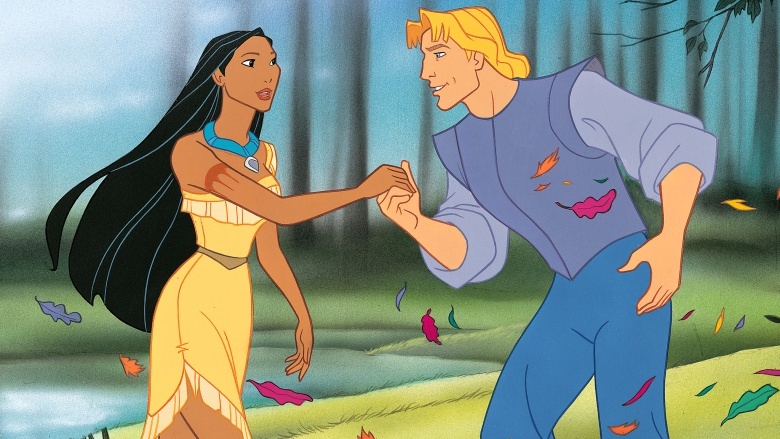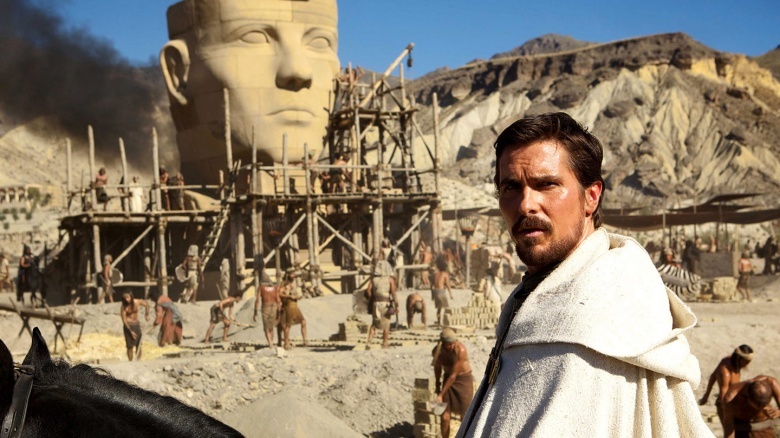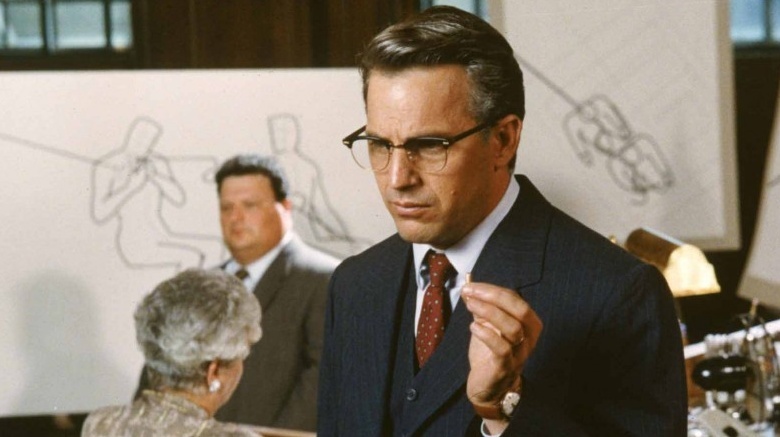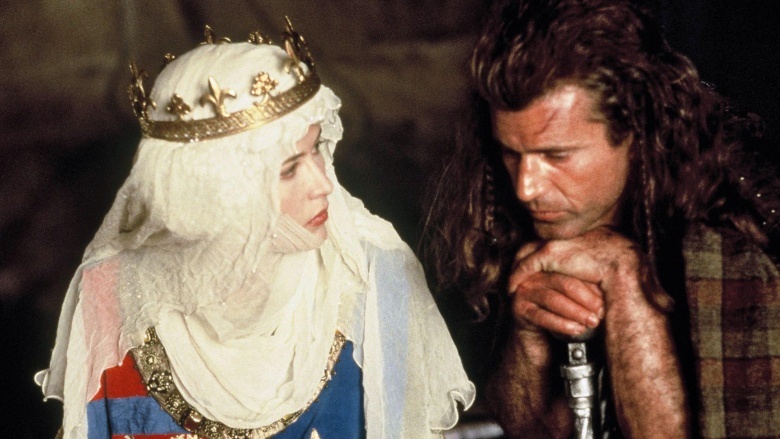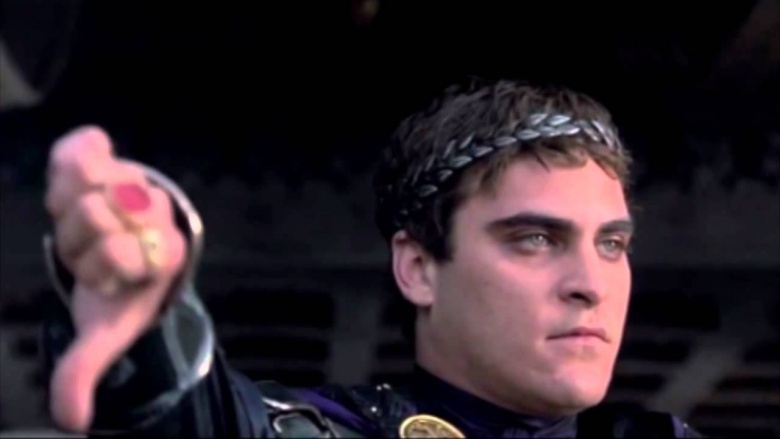Movies That Rely On Inaccurate History For Their Plots
Hollywood has never been shy about stretching fact to create more interesting fiction. Sometimes, however, filmmakers go too far in their efforts to produce exciting movies depicting historical events. These embellishments are easy for filmgoers to take at face value, never learning the truth for themselves. With this in mind, here are a few movies that inaccurately depict real-life events or contain disproven historical theories.
Pocahontas (1995)
Disney's Pocahontas shows the titular character in a romantic relationship with Englishman John Smith, but in reality, Pocahontas was only 12 years old when she met the 27-year-old Smith in 1607. Smith claimed that Pocahontas selflessly saved him from execution by her father, Chief Powhatan, but historians are skeptical about the authenticity of his story. The movie doesn't recount that Pocahontas later married Englishman John Rolfe, converted to Christianity, changed her name to Rebecca, and moved to England. While there, the Virginia Company showcased her as proof that Native Americans could be converted to Christianity. She eventually fell ill and died in 1617, at the age of 22, of either pneumonia or tuberculosis while on a voyage back to Virginia. Pocahontas engendered controversy due to these inaccuracies. In response, Disney opted to butcher literature instead of history with its next film, 1996's The Hunchback of Notre Dame.
Anastasia (1997)
The Bolsheviks, forerunners to the Soviet Union's Communist Party, deposed Russia's royal family, the Romanovs, during the Russian Revolution of 1917. Soldiers later executed the entire family—Tsar Nicholas II, Tsarina Alexandra,their five children, and several servants—on July 17, 1918. Afterward, several impostors came out of the woodwork claiming to be the youngest Romanov daughter, Grand Duchess Anastasia. Archaeologists inadvertently gave credence to the theory that Anastasia somehow survived the massacre when they only discovered three of the Tsar's daughters after unearthing the graves in in 1991. The body of one daughter and the Tsar's son, Alexei, were still missing. Her possible survival served as the basis for the animated film Anastasia and an upcoming television series. The mystery remained until archaeologists found the buried remains of the last two members of the royal family in 2007. DNA testing later confirmed their identities as Alexei and one of the Romanov's daughters, leaving all bodies accounted for—and putting all Anastasia-related shows and movies under the shadow of false history.
Exodus: Gods and Kings (2014)
Exodus: Gods and Kings retells the Biblical story of Moses leading the Jewish slaves out of Egypt. There are many aspects of the story that are not supported by archaeological evidence, including the Exodus itself. Moreover, the movie shows Jewish slaves building pyramids—a commonly held but inaccurate belief. Egyptians built the pyramids built between 2589 and 2504 BCE, hundreds of years before the foundation of Judaism around 2000 BCE. Besides, recent archaeological evidence also shows that the Pharaohs did not use slave labor to build the pyramids. This isn't to say that life as a pyramid builder was a walk in the park, but it's still inaccurate to characterize them as slaves. Finally, Pharaoh Ramses II (Joel Edgerton), the movie's antagonist, did not rule Egypt until more than 1,000 years after the construction of the pyramids.
JFK (1991)
Director Oliver Stone's movie JFK contains a litany of controversial and poorly-supported conspiracy theories about the 1963 assassination of President John F. Kennedy by Lee Harvey Oswald. It would take a research report to adequately refute all the film's conjectures, but among the most notable is what JFK conspiracy-mongers call the "magic bullet theory." They argue that it is impossible, as official investigations concluded, for one bullet from a single gunman to have struck and wounded both JFK and Texas Governor John Connally. Many conclude that two different killers—perhaps one of them on the infamous "grassy knoll"—committed the crime. Forensic evidence disproves this theory, and it actually is possible for one shooter and one bullet to have inflicted the wounds on both men. Still, a Gallup poll in 2013 found that 61 percent of Americans h the Kennedy assassination was the result of a conspiracy—a widespread belief that's partially due to movies like JFK.
Braveheart (1993)
William Wallace, the Scottish hero of Braveheart, was not a commoner who rose from poverty to become a hero. Wallace was actually the son of of a minor Scottish nobleman and he led a relatively privileged, middle-class youth. Braveheart also invents a romantic relationship between Wallace and Isabella of France, who was wed to King Edward II in both the movie and real life. The movie asserts that Wallace sired her child, and England's future king, Edward III. None of this is possible, since Wallace died in 1305 and Isabella did not wed Edward II until 1308. Moreover, Edward III was born in 1312.
Gladiator (2000)
Russell Crowe's Gladiator character, Maximus, is fictional, yet many of the film's other characters were real people. Emperor Marcus Aurelius (Richard Harris) and his son Commodus (Joaquin Phoenix) both existed, but neither of them died as depicted in the movie. Marcus was not murdered by Commodus; he perished from a disease, likely smallpox. In Gladiator, Maximus kills Emperor Commodus during a battle in the Coliseum. It's true that Commodus enjoyed participating in gladiatorial events and by all accounts he gave the Mad King in Game of Thrones a run for his money in the insane ruler department, but he actually died in his bath after being strangled by a wrestler named Narcissus. The Roman Empire fell into civil war shortly after his murder.

